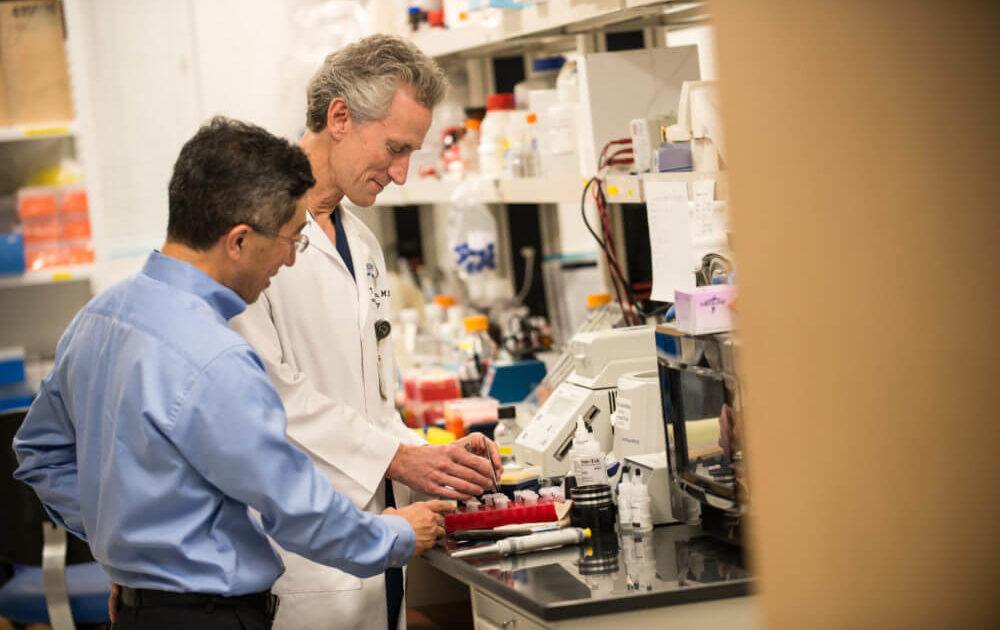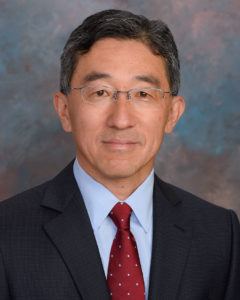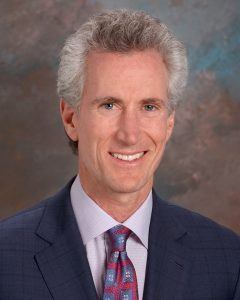
Barrow Study Links Gut Microbiota to Brain Aneurysms
The findings, published in the journal Hypertension, showed that gut microbiota may contribute to aneurysm formation by regulating inflammation of the blood vessels.
Gut microbiota refers to the diverse community of microorganisms, or bacteria, living in the digestive tract of humans and animals. These microorganisms have long been known to play a role in digestive health but have more recently been implicated in chronic diseases in which inflammation plays a pivotal role, such as atherosclerosis, diabetes mellitus, and ischemic stroke.
Various environmental factors determine the composition of each person’s gut microbiota. Diet is the most significant factor but others include lifestyle, physical activity, personal hygiene, alcohol consumption, and smoking.
“There’s a lot of evidence suggesting the strong influence of environmental factors on intracranial aneurysm,” said Dr. Tomoki Hashimoto, director of translational neurovascular research in the Barrow Aneurysm and AVM Research Center. “Because environmental factors affect the composition of gut microbiota, we thought maybe the composition of gut microbiota may affect the disease course of intracranial aneurysm.”
An aneurysm is a balloon-like bulge in the wall of a weakened blood vessel. It can burst and bleed into surrounding tissue at any time. When this happens in the brain, it causes a hemorrhagic stroke. An estimated one to five percent of the population harbors an unruptured brain aneurysm.
Starting with a Simple Question
Dr. Hashimoto and his team developed a “proof-of-concept” study to see if they were onto something. They started with a simple question: Does gut microbiota have an effect on brain aneurysms?
To answer this, they depleted the gut microbiota from a group of mice using a combination of antibiotics. In another group of mice, they left the gut microbiota intact. The latter served as the control group.

Director, Translational Neurovascular Research
The researchers found that abolishing the gut microbiota significantly reduced the incidence, or rate of occurrence, of aneurysms. The incidence of aneurysms was only 6 percent in the bacteria-depleted group, compared to 83 percent in the control group.
Because other studies strongly indicate the role of macrophages—white blood cells that rid the body of foreign substances—and inflammation in brain aneurysm formation and growth, the researchers took their study a step further and looked at macrophage infiltration in the vascular lesions.
In the intact-gut group, macrophages were abundant in aneurysm walls. However, they were scarce in the bacteria-depleted group.
The researchers also assessed cytokines in both groups, which are small proteins produced mainly by macrophages to regulate various inflammatory responses. They found that eliminating the gut microbiota significantly reduced mRNA levels of cytokines.
A New Avenue of Research?
Dr. Hashimoto said he and his team had low expectations going into the study, but they thought it was worth exploring a possible connection. Their findings surprised them.
“When Dr. Hashimoto first approached me with his hypothesis that gut bacteria played a role in aneurysm formation, I was skeptical—not to mention that this was not the most glamorous concept,” said Barrow President and CEO Dr. Michael Lawton, a co-author of the study. “These findings are provocative because they change the way we think about aneurysm formation and suggest an entirely new therapy for aneurysm patients.”
Dr. Hashimoto sees two possible approaches for future research. One approach is to try to pinpoint a particular bacterium or set of bacteria that may be responsible for aneurysm formation.

From there, a potential therapy could involve lifestyle and dietary changes to alter the composition of the gut microbiota. A more drastic possibility is a fecal transplant, which has been used to treat other conditions.
“But when you think about the number of gut microbiota or types of gut microbiota, it’s probably unlikely one bacteria is responsible for everything,” Dr. Hashimoto said. “Probably what we are seeing here are collective effects from all of the gut bacteria.”
Dr. Hashimoto is more excited about the other approach: looking at gut microbiota as a biomarker, or a measurable indicator, of aneurysm progression.
“We need to come up with a new way to predict which patients may be at higher risk for rupture because that can determine if they need treatment, like surgical clipping or endovascular coiling,” he said.
To Dr. Hashimoto’s knowledge, this is the first time gut microbiota has been formally studied in the context of aneurysm formation—and it’s already generating a lot of buzz in the scientific community. He said the findings could potentially have applications for other vascular lesions. He and his team believe the study warrants further research.
“Although this is really preliminary,” he said, “this might start a new avenue of research to try to understand what environments do to aneurysm.”
